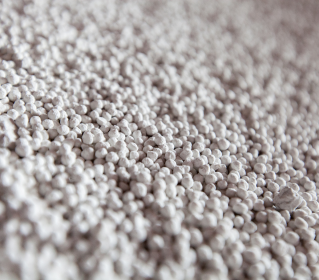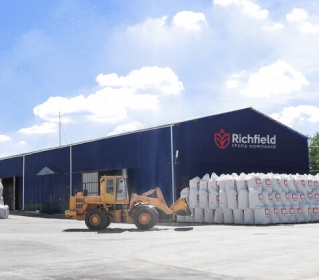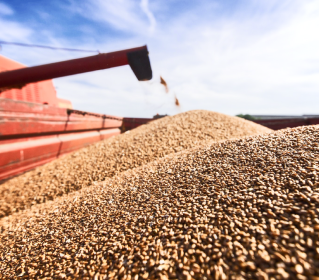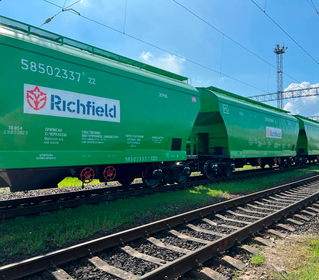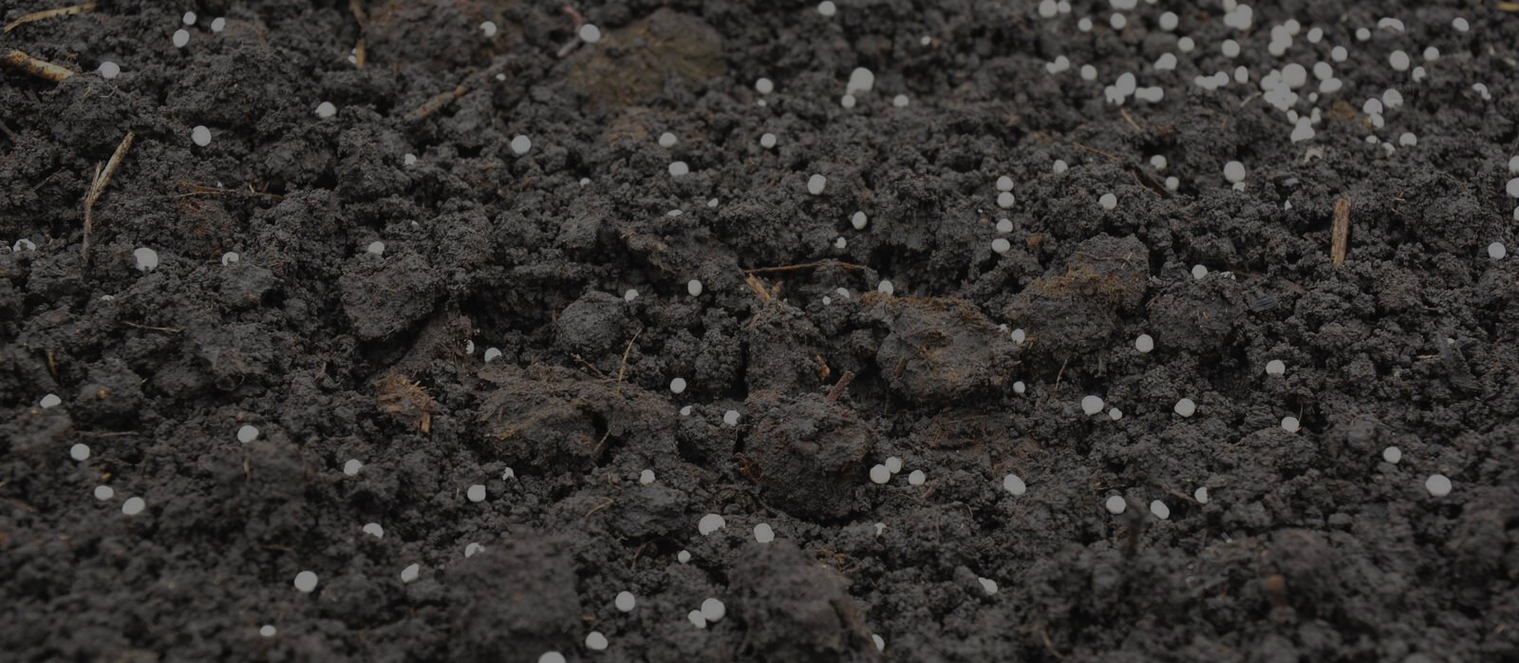
Mineral nutrition of corn
Optimizing the application of mineral fertilizers in view of the critical phases of the development of corn plants increases the efficiency of their application.
Weather and price fluctuations require changing approaches to mineral nutrition of this crop in order to optimize them. As experience shows, the maximum effectiveness of fertilizer application ensures compliance with certain conditions. These are: the correct choice of fertilizers, a clear determination of the rates of introduction of the active substance, application of fertilizers at the right time and the optimal way of introduction of certain nutrients.
This is extremely important, because different forms of fertilizers, entering the soil, cause different chemical processes, as a result of which they are not equally accessible to the root system of plants. The need of plants for certain nutrients depends on the phase of development, and the realization of their productive potential is directly related to the presence of these elements in the soil.
And most importantly: in order to obtain high profitability of corn cultivation, it is necessary to clearly calculate the financial component of costs. Otherwise, a significant part of the fertilizers, and therefore the funds, will be wasted. It is impossible to deceive nature. A certain amount of nutrients is required for the formation of the planned corn grain harvest. For example, if you want to harvest more than 10 t/ha, corn plants must absorb at least 240+ kg of nitrogen, 100+ kg of phosphorus, 250+ kg of potassium, 60+ kg of sulfur, 50+ kg of calcium and a certain amount of trace elements, primarily zinc , boron and manganese.
Of course, a significant part of these nutrients is in the soil, and under favorable conditions, the root system of plants is able to absorb them. However, firstly, soil resources are not unlimited - if they are not regularly nourished, this will quickly affect their fertility and the yield of the same corn and other crops. Secondly, not all nutrients in the soil are available to plants due to various factors. These are the insufficient amount of moisture, the pH level, the presence of compactions and other negative factors that can leave corn seedlings on a hungry ration. This is even more important because, unlike most grain crops, corn needs enhanced mineral nutrition until the crop matures. As a crop with a long growing season, it tends to absorb nutrients from the soil throughout its life cycle. Nitrogen and potassium are consumed by corn plants mainly before the panicle shedding phase, and phosphorus is more actively absorbed during seed germination, during the period of initial development and during pouring and ripening of grain. Accordingly, we recommend starting the optimization of corn mineral nutrition from a representative selection of soil composition analysis data. This applies both to the presence of key nutrients and to the determination of its key characteristics, primarily the level of acidity. Such analysis will make it possible to understand the situation more clearly and subsequently increase the efficiency of fertilisers. Particular attention should be paid to the vital nutrient for this culture - nitrogen. The composition of mineral fertilizers includes different forms of nitrogen — nitrate, ammonium, amide. They have a different chemical reaction when they get into the soil, and are absorbed by plants in different ways. The root system of corn is capable of assimilating only nitrate and ammonium forms of nitrogen. The ammonium form is better absorbed by plants on alkaline soils, while the nitrate form is better absorbed on acidic soils. The root system does not perceive the amide form of nitrogen at all. Before it becomes available to plants, specific bacteria must work. Therefore, when choosing fertilizers, you should pay attention to the physical and chemical properties of the soil. According to the latest confirmed results of research and tests, corn at the start needs a limited amount of all the necessary nitrogen - no more than 25-30%. The need increases after the appearance of the tenth leaf. Therefore, we recommend revising the traditional schemes of nitrogen feeding of corn, focusing on the wider use of various types of fertilization — from inter-row intra-soil to root and extra-root — for a more rational use of the active substance. This requires additional technical equipment for farms, but in the long run, it makes it possible to increase the profitability of corn cultivation due to the increase in its yield. Conventionally speaking, it is better to apply 10 kg of urea per leaf one more time than to lose several times its volume as a result of nitrogen leaching into the soil.
There are no less questions about determining the rate of application of nitrogen fertilizers. Traditionally, the rate of fertilizer is calculated for the planned harvest, taking into account the presence of elements in the soil. To obtain 10 or more tons of corn grain, plants need to absorb 240+ kg of nitrogen in the active substance. These calculations are not easy due to the high mobility of nitrogen in the soil, so if necessary, it is advisable to connect qualified agronomic consultants to them.
The key role in determining the amount and methods of mineral nutrition of corn crops is the degree of intensity of the crop cultivation technology. As you know, hybrids of the intensive type are recommended to be sown after the best predecessors, because they respond better to the increased background of mineral nutrition, forming a larger crop. Accordingly, the economic efficiency of growing such hybrids is much higher, even despite higher costs for mineral nutrition.
It is believed that hybrids of the adaptive type can be sown after worse predecessors, given the fact that they are more resistant to stress factors. But farmers, for the most part, do not rely on super high yields in the case of growing adaptive hybrids. And even adaptive hybrids need a certain minimum balanced power background. And this, in turn, puts forward strict requirements for the optimization of corn mineral nutrition technology.
An important factor in the normal mineral "nutrition" of corn is not only the quantity, but also the quality of fertilizers. Accordingly, the requirements for their composition and degree of digestibility are increasing. Fertilizers for corn are applied to the row during sowing with the help of fat seeding devices of planters at a distance of 3–5 cm from the side of the row and 4–5 cm below the depth of seed wrapping.
The main requirement for starter fertilizers is the fastest possible availability for the root system of plants in the early stages of development. The root system at the start is not yet well formed. Rapid evaporation of moisture from the soil and its low temperature can lead to insufficient consumption of such elements as nitrogen, phosphorus, potassium, etc. Therefore, it is considered optimal to apply a certain amount of urea, which supplies nitrogen in a prolonged manner, or KAS for pre-sowing treatment and to apply phosphorus fertilizers in the row. Thanks to readily available phosphorus, plants will have time to form a developed root system before the onset of a dry period. It is very important to include sulfur in this scheme. It is added to the composition of KAS or pre-sowing application of magnesium sulfate. As an option, the introduction of complex fertilizers containing nitrogen, phosphorus and sulfur. After all, the effectiveness of nitrogen directly depends on the sufficient supply of sulfur.
High efficiency is demonstrated by pre-sowing seed treatment with highly concentrated mixtures of trace elements, in particular zinc, boron, molybdenum, manganese, etc. They serve as catalysts for more active use of the main nutrients — nitrogen, phosphorus, and potassium. Pre-sowing treatment of seeds with such fertilizers not only increases the yield and quality of the obtained products, but also increases the resistance of plants to a complex of diseases, adverse environmental conditions (low or high temperatures), accelerates the growth and development of plants and optimizes the use of moisture. Frequent and dense pre-sowing treatment of seeds with microelements provides higher efficiency than applying high rates of fertilizers for corn in the soil.
Under the conditions of a cold spring, the importance of in-soil fertilizing between corn rows with simultaneous loosening of the soil and partial mechanical destruction of weeds increases. Depending on the technical capabilities of the farm and the presence of moisture in the soil, it can be classic ammonium nitrate or liquid fertilizers. It is optimal to add the already mentioned trinity: nitrogen, sulfur and phosphorus, which will contribute to the normal development of both above-ground and underground parts of corn plants.
Do not forget about foliar fertilization of crops. It can be, first of all, a classic mixture of urea + magnesium sulfate, thanks to which prolonged nitrogen nutrition, intensive development and increased stress resistance of plants are ensured. Secondly, complex fertilizers with trace elements in chelated form. The main purpose of their application is to improve plant nutrition and their maintenance during the most critical periods of growth and development, reduce the negative impact of environmental conditions (weather conditions, pesticide stress), increase the intensity of the formation of individual plant organs, influence the outflow of nutrients and improve the quality of products.
In the development of corn plants, two main critical phases are distinguished, during which it is recommended to increase the introduction of microelements by leaf. These are phases of three — five and seven — eight leaves. During the first of them, it is recommended to give plants additional phosphorus nutrition together with manganese, boron and zinc. It will not hurt to add urea together with magnesium sulfate.
The phase of seven or eight leaves is characterized by intensive plant growth, so the need for zinc, manganese, boron and copper increases. It is advisable to add them in combination with treatment with a mixture of urea + magnesium sulfate.
